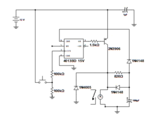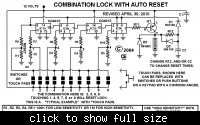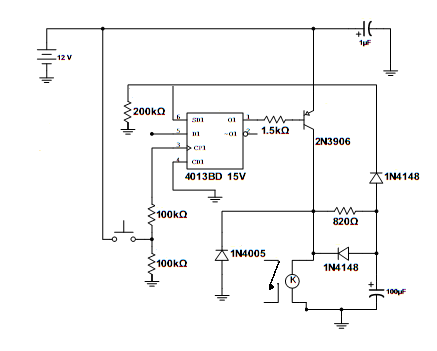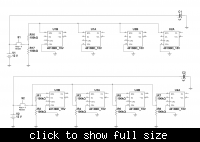holabr
Member level 2
I'm working on a electronic combination circuit using a series of flip-flops. That last stage triggers a timing circuit that holds a relay closed for a set period of time. (I've attached a drawing of the circit below) Since I modeled this after some circuits I found on the internet and I'm pretty much a novice, I'm not sure exactly how this timing circuit works. I'd like to make the time that the relay stays closed adjustable with a pot but I'm not sure where the pot goes or what size it should be. Any help and guidance is appreciated.



